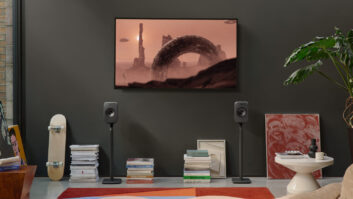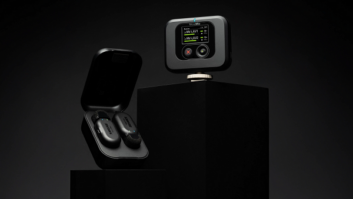To date, wireless systems have played a small role in the distribution of HD video content within the home. This is in stark contrast to many other use cases, where wireless products have become strongly preferred over wired solutions, to the point where some wired solutions have nearly disappeared (e.g., telephones).Recently, a number of wireless solutions are promising to deliver compelling HD video in the home. How do we evaluate the potential of these technologies to enable wireless connectivity? How can we tell which solutions will deliver the most consumer value and thus achieve the greatest market success?
As a start, it is a bit obvious to state that consumers love wireless products. From “cordless” phones to the now ubiquitous Wi-Fi networks, consumers love the ease of use and flexibility of wireless. So what can these solutions tell us about consumer expectations for a wireless solution? The answers are clear: First, in the home, consumers expect the ability to use their wireless systems in more than one room – they expect to be able to connect any device, anywhere in the home. This is what consumers immediately think of when they hear about “wireless” in the consumer electronics world.
To emphasize this point, imagine if previous wireless products were limited to in-room uses. How fast would adoption be for a cordless phone that could only be used in one room – or for a wireless network that allowed you to connect your laptop to the Internet anywhere in a single room? Sure there is some value to the consumer, but it is obviously limited and not what consumers are expecting.
A second expectation that consumers increasingly have of wireless devices is the ability to connect to any source of HD content – whether a traditional CE source like a Blu-ray player, portable devices such as notebooks or camcorders, or even mobile phones. Consumers want access to their content without having to worry about whether their devices are wired together.
One of the reasons that some wireless HD systems have yet to achieve wide CE adoption (e.g. WirelessHD and UWB solutions) is that their underlying technology is limited to single room, single cable-replacement solutions. In most cases, this means the replacement of a single HDMI cable, from one source to one TV. A key limitation is that these solutions enable few or no new use cases for consumers. In fact, because some such solutions cannot pass through a solid surface (e.g., 60Ghz solutions such as Wireless HD), they arguably enable fewer use cases than cable. This is because such systems will not work in many common installations, such as an A/V cabinet or hutch with doors (as in my living room), or the increasingly common A/V closet. This issue has the potential to generate significant consumer confusion and frustration as well as increased support requests and product returns as customers attempt to match their expectations of wireless with the inherent limitations of this technology. As we saw with HDMI-related technology issues (remember HDMI versions 1.1, 1.2, 1.3 or CEC interoperability issues?), it is difficult for retailers to effectively explain such technology limitations to consumers on the show room floor.
Another limitation of today’s wireless systems is that most of these are “closed” solutions, where consumers cannot connect multiple wireless sources to one TV or multiple wireless TVs to one source. Moreover, with such systems, users cannot mix products from different manufacturers. Consumers are essentially buying a locked pair of devices. Such solutions are obviously not providing the full value of wireless to the consumer.
This is not to say that there is no value to in-room only and closed systems – certainly there is. However, it is multi-room solutions, such as those enabled by the Wireless Home Digital Interface (WHDI) standard, that can also connect all CE, PC and mobile sources, which will provide the most value to consumers and generate the most excitement in the market. This is because solutions that deliver both in-room and multi-room connectivity, combined with the ability to connect mobile sources, will meet consumer expectations and enable consumers to take advantage of the latest use cases emerging in the market. It is only WHDI that combines the range, robustness, image quality and the scalability to ultra-low power which are required to meet these expectations.
With WHDI, customers can connect any HD source or TV to all of the other HD devices in the home. Consumers increasingly want to take advantage of the high-quality, inexpensive TVs on the market. Recent U.S. statistics from Nielsen show that the number of TVs per household is steadily increasing (now nearly three TVs per household), and surpasses the number of persons per household. With WHDI’s multi-room connectivity consumers can easily add a TV to the bedroom, exercise room, kitchen or patio – and immediately connect to the set top box or Blu-ray player in the entertainment room. Such multi-room implementations are the hardest cases for wired solutions to solve because they often require expensive custom installation involving cutting/drilling and equally expensive equipment or cabling to achieve the long-cable run. This makes multi-room wireless a compelling solution for such installations.
Moreover, with WHDI, consumers can also take advantage of the increasing number of HD sources and the increasing amount of content that they are delivering or generating. Whether a PC or laptop in the office, or your iPhone or camcorder charging in your kitchen – all of these devices are increasingly becoming sources of HD content, and WHDI enables consumers to bring them all together. What’s more, with WHDI, consumers are not giving up quality. WHDI has the advantage of delivering the highest quality (easily supporting uncompressed 1080p/60) for both in-room solutions and the whole home.
I was involved in creating and growing the HDMI standard, and from the beginning we were keenly aware that for a CE standard to be successful, it must enable an entire ecosystem. And it did: HDMI enabled new opportunities for consumers, CE makers and retailers, and even content producers. Multi-room/ multi-platform (CE, PC, mobile) wireless solutions, such as WHDI, are uniquely poised to enable the same ecosystem. WHDI benefits consumers by enabling them to consume content where and when they want. CE manufactures and retailers will benefit as consumers purchase more sources and displays to view this content. Content providers will benefit as consumers will increasingly consume more content. No in-room only wireless system (or closed system) provides such benefits to all players in the ecosystem.
A number of standards have been trying to enable wireless HD applications in the CE space for several years. While these closed, in-room only wireless solutions have generated some excitement and new products, I believe that it will be the robust, multi-room and multi-platform connectivity of WHDI that will truly drive consumer excitement and create this new wireless CE ecosystem.













